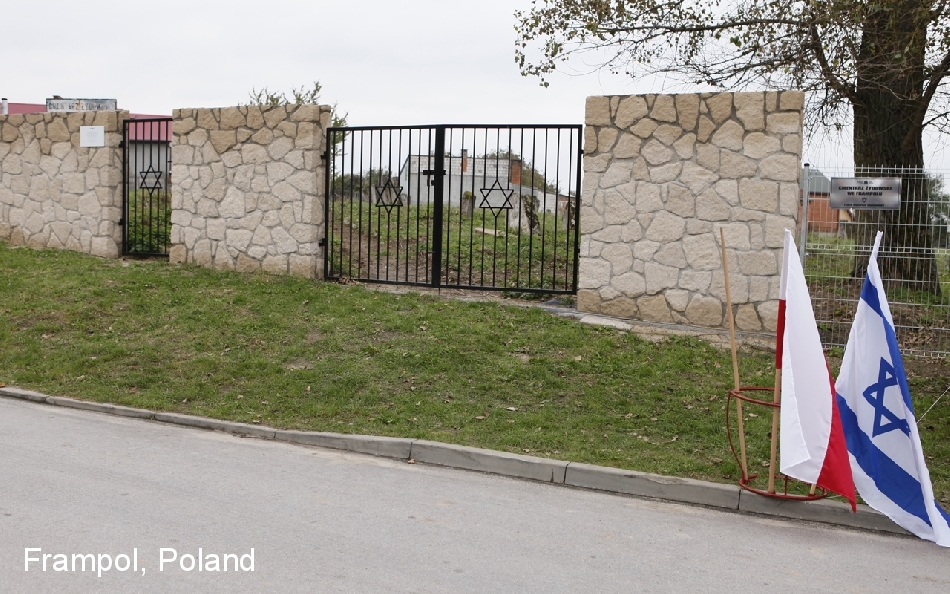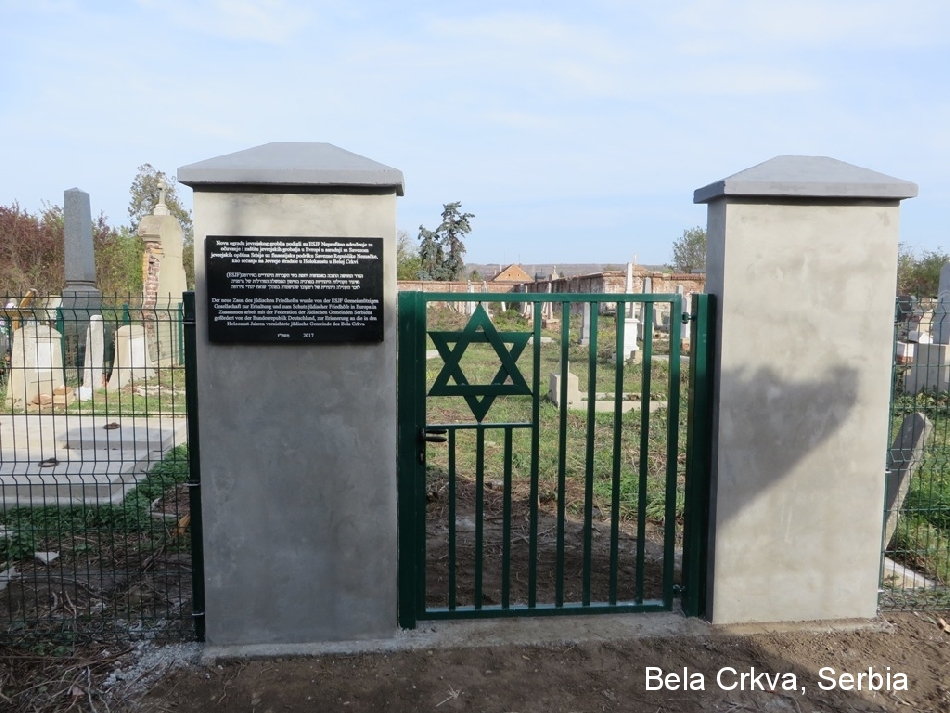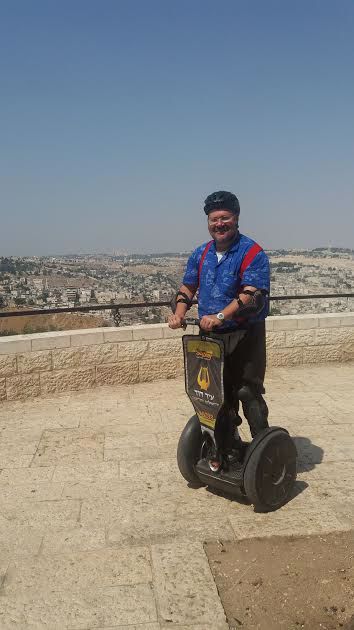When Rabbi Shmuel Halpert, outgoing Knesset member of the haredi party Agudat Yisrael, invited Rabbi Isaac Schapira to a meeting in July 2011, Schapira's life changed forever. He was convinced that he had to improve the situation for Jewish cemeteries worldwide, which were suffering from disrepair, neglect and vandalism from outside communities.
Schapira describes Halpert as a pioneer in fighting for the rescue of Jewish cemeteries. "I don't know who will continue this fight. I think you and your connections are best-suited for it. Just dive in!" said Halpert.
And so, Schapira did just that. "It spoke to me. It broke my heart."
He has used resources, connections, bridge-building skills, determination and values that he learned from late father, Rabbi Avraham Schapira (Knesset member from the Agudat Israel party and chairman of the Knesset Finance Committee) to found the European Jewish Cemeteries Initiative.
The ESJF was founded in 2015 to begin the process of physically protecting Jewish burial sites in Central and Eastern Europe, particularly in places where Jewish communities were wiped out during the Holocaust. ESJF has so far placed fences around 102 Jewish cemeteries in six European countries. In addition, it has conducted mass field surveys of sites with an impressive 1,500 reports published to date.
Project partners in Europe and Israel
Schapira is proud that his organization has built an infrastructure that European governments recognize as "professional and economically efficient." For instance, ESJF has obtained governmental funding from the federal government of Germany.
In Israel, Schapira has managed to assemble an impressive coalition of supporters, including Yossi Beilin, scholar—former Knesset and senior Cabinet member, who has held such important government positions as Minister of Justice and Minister of Religious Affairs. Beilin has served as a board member since 2013. He is actively involved in working with international governments with helping secure financial resources.

Rabbi Isaac Schapira, founder of the European Jewish Cemeteries Initiative, sitting with a portrait of his late father, Rabbi Avraham Schapira. Credit: Howard Blas.
Acknowledging the compelling nature of the work, he says: "It became a major issue for me. We found out in a short time that we are the only body on the ground doing the work of finding [and then funding] cemeteries in a systemic way. We are working with the map and creating a body of knowledge in order to prioritize and address the most endangered cemeteries first."
Knesset members committed to the project include Ksenia Svetlova of the Zionist Union Party, and Rabbi Uri Maklev of the ultra-religious Agudath Yisrael Party. Schapira is proud that members of diverse parties have come together to address the issue of European cemeteries.
Maklev reports, "We got involved when Rabbi Yitzhak Schapira turned to us. He works with much devotion and donates time and money. There is a real danger in the old cemeteries in Europe when they are left unprotected. The issue has worsened over the years. Jewish cemeteries remain unguarded and in constant danger, as Jewish community members now live far from its cemeteries. In addition, anti-Semitism and vandalism exist. It is a right and duty to act for this important cause. We must not stand idly by!"
Svetlova first became aware of the issue of Jewish cemeteries on a trip abroad. Svetlova, who immigrated from Russia in 1991, and served as a journalist and Arab-affairs analyst for Channel 9, was in Libya in 2005 in the remote town of Zlitan when she discovered "the horrible picture of devastation—broken or absent gravestones" at Jewish cemeteries. "It made me very sad. All we have is a grave. We cannot allow us to forget our past. A person who forgets his past has no future."
Svetlova is also a member of the Immigration, Absorption and Diaspora Committee, where she initiated the Knesset Caucus for the Preservation of Jewish Cemeteries Abroad. She says she is proud that the caucus includes people "from all sides of the aisle."
On the ground in Europe
Beilin says "people are very worried that cemeteries are vanishing. If we don't save them now, they won't be there."
He has seen a shift from the initial work of providing fencing to cemeteries, to "finding those in immediate danger and giving priority to them, even if they are not in the most convenient places." He estimates that "we have already lost between 4,000 and 10,000 cemeteries."
Schapira adds that "the Jewish world needs to know how many Jewish cemeteries are disappearing and are at risk of disappearing due to vandalism, and geological and other reasons."
Beilin and Schapira shared many stories of cemeteries discovered by accident, including a non-Jewish girl riding her bike in a forest and taking a photo of what she thought was a tombstone. Or of local people providing unexpected assistance to the work of ESJF. "People must have seen us working on a cemetery. One week later, we arrived and saw tombstones there which one week earlier had been missing. They must have thought that, if this was so important, we will give back what was stolen," reports Schapira.

The restored and preserved Jewish cemetery in Frampol, Poland. Credit: Courtesy of ESJF.
The group's CEO Philip Carmel praises such work. "Rabbi Schapira has succeeded in changing the way we address the issue of Jewish cemetery protection. … He has brought the issue to the level of national governments and pan-European institutions, so that [it] is dealt with not just as an issue of Jewish heritage, but one of Europe's common heritage. He has achieved this by absolute strength of conviction and by deep personal commitment."
Chief Rabbi of Poland Michael Schudrich also admires Schapira's efforts and feels that he is "following the spirit of his father in understanding what it means to fight for Klal Yisrael." He is impressed with his drive and ability to bring diverse groups of Jews together. "It is about bringing Jews together for kavod hamet, 'honoring the dead.' It is important to build a future."
Even the Queen of England has recognized Schapira for his lifetime of service. In 2013, she bestowed on him the title "OBE," Order of the British Empire, for, as Schapira humbly reports, "building bridges of friendship between the British government and the Orthodox communities in England and Israel."
In our two in-person meetings in New York City, Schapira prefers to direct praise to members of his team, especially Carmel, for "his commitment to the project and his unusual capabilities to achieve so much and so efficiently."
Beilin agrees, saying the CEO is "there on the ground. He is a very important player. He knows the material of cemeteries. He is so dedicated to the work."
The lifting of the Iron Curtain
"For almost 73 years," reports Carmel, "the Jewish world has not been able to deal with the protection of these sites for a number of reasons. Firstly, that the priority after the Shoah was rightly to rebuild Jewish life, communities and institutions, as well as a new Jewish state. Secondly, because for most of this time, these abandoned sites, which were home to thriving Jewish communities for hundreds of years, lay behind the [Soviet] Iron Curtain.
"But since that period, resources have tended to go to specific sites, where there is a particular family connection or where a famous personnage was buried. At such sites, one has found a situation where individual demand from the West and readily available resources has met cheap supply of labor and materials in the East. This has pushed up prices, making the overall task of cemetery protection more difficult. That is why the ESJF as a starting point has looked to change this whole methodology—to work in a professional manner under strict processes of contracts and tenders. To reach viable and legitimate costs, enabling the maximization of the amount of sites we can protect.
"The ESJF looks where possible to target sites which are beneath the radar. Some of these places had all their community wiped out; there are no descendants. So these sites are a priority for us, of course, because if we don't fence them, nobody will. In the major countries where we work, in particular—Belarus, Ukraine, Moldova—probably 25 percent of the sites have already been destroyed. And they are being destroyed by the week. From our mass surveys, we are looking at some two-thirds of all the remaining sites requiring urgent fencing."

A restored Jewish cemetery in the Serbian town of Bela Crkva. Credit: Courtesy of ESJF.
Schudrich notes that "nothing was possible until 1989 and the fall of Communism. Then, we started working on mikvaot, kosher food, cheders, minyanim . . . "
A mission for the Jewish people
Svetalova relates that she is "very grateful for the work being done in Eastern Europe, and is hopeful Jews from the United States and other places will get involved as they learn more.
"Many American Jews come from Eastern Europe and will be able to relate to the importance of the project," she says. "There must be cooperation between all sides of the Jewish world. We must try to use all connections in the U.S., Europe and Israel with governments in order to put this project on the map. Time is running out. If we don't, we will find out it is too late!"
"Going forward," notes Carmel, "we need to look at this as a mission for the Jewish people that is achievable. All peoples and governments protect their cemeteries. Any American can relate that just by driving up from the South to New York—of how the national government has protected graves in Civil War battlefields for more than 150 years ago. Or the graveyards in Normandy protected by the Allied governments from World War I from 100 years ago.
"As Jews," he continues, "we have the same basic responsibility."
Today, he notes, thanks to the work of the ESJF and many others, "we know the numbers, we know the areas of greatest risk, we know the costs, and we know the speed it can be done in. This is no longer a black hole. It can be achieved."
Schapira reports proudly that "in 2017, we rescued our 102nd cemetery. We have the most wonderful, competent team and can do 300 a year."
He continues to work tirelessly to make sure it's not too late, that the work can be accomplished—but, he adds, "only if the Jewish nation worldwide develops a feeling of responsibility and partnership to allow this apparatus to continue operating."
(JNS)






No comments:
Post a Comment